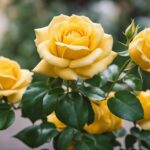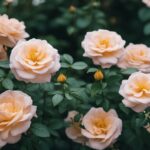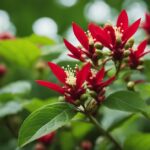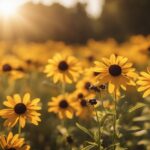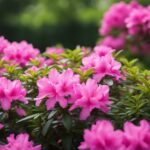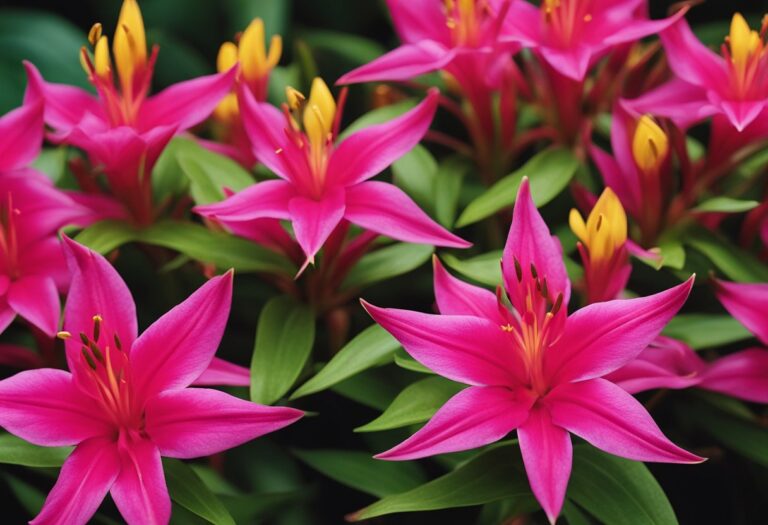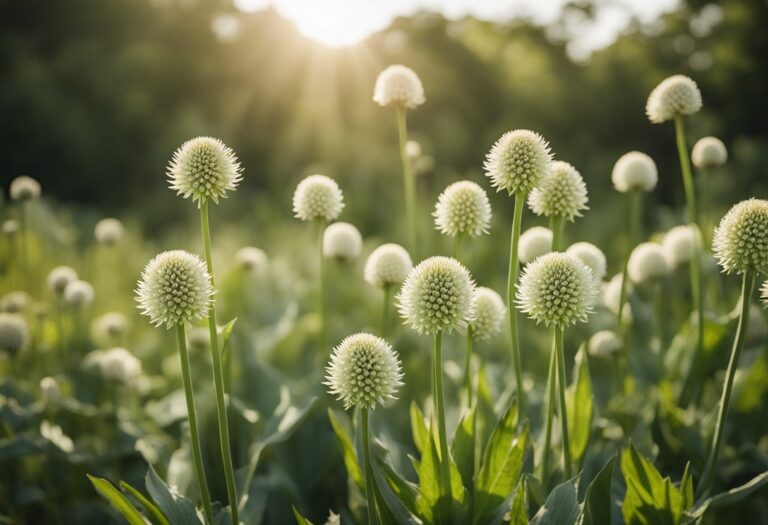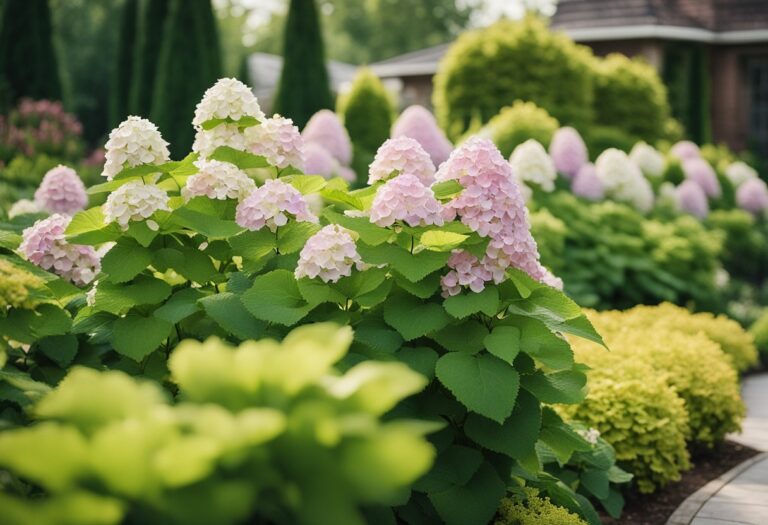Overview of Baptisia Australis
Baptisia australis, also known as Blue False Indigo, is a robust perennial that offers striking beauty to your garden. It is native to central and eastern North America, particularly the Midwest, and has become a favorite among gardeners and pollinators.
When you plant Blue False Indigo, expect it to flourish into an upright, bushy stature, growing 3 to 4 feet tall. Spring brings a profusion of deep blue to indigo-colored flowers reminiscent of the vibrant hues true indigo provides. After the flowers fade, inflated seed pods emerge, which can add textural interest to your garden or dried arrangements.
Your Blue False Indigo thrives in full sun to part shade and prefers well-drained soil. Once established, it is drought-resistant and a member of the Fabaceae, or legume family, which means that it can improve your soil by fixing nitrogen.
Here’s what to expect with this plant in your landscape:
- Bloom Time: Late spring to early summer.
- Zones: Indigenous to USDA 3 through 9.
- Companions: Pairs well with plants like Echinacea and grasses.
In addition to its ornamental appeal, Baptisia australis has a notable history. Native Americans used it as a source of blue dye, a more economical alternative to the costlier true indigo. This historical use earned it the common name False Indigo.
Remember, while Blue False Indigo is easy to care for, it dislikes being moved once established. Plan your garden accordingly, placing your Baptisia where it can grow undisturbed for years.
Cultivation and Care
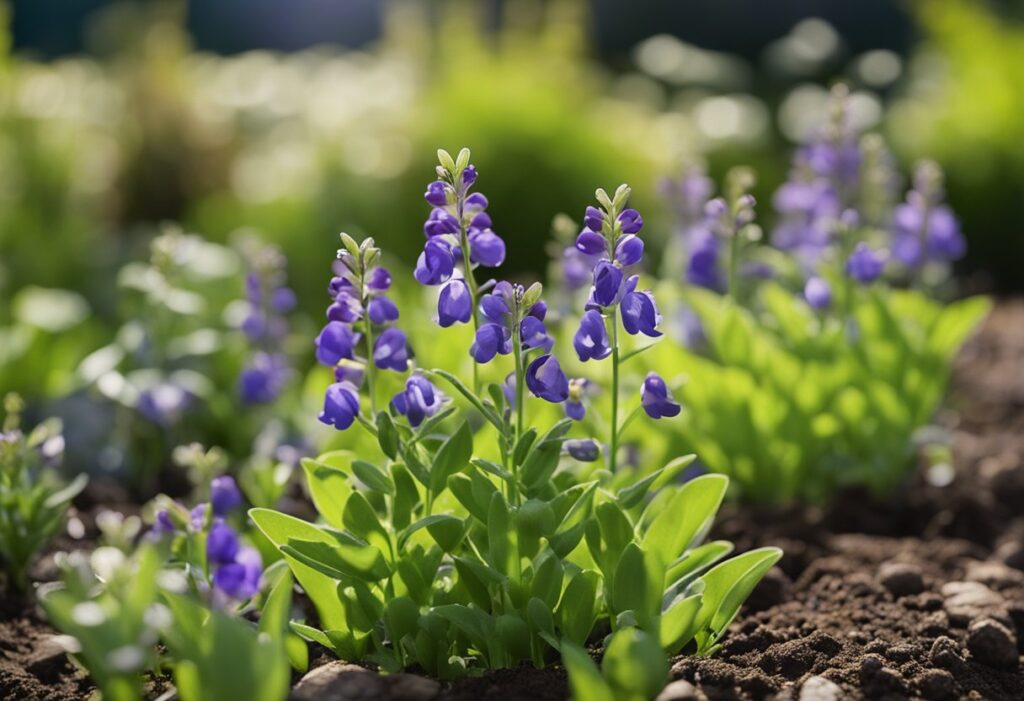
Cultivating Baptisia australis, or Blue False Indigo, requires patience for its gradual establishment, and consistent care to promote its robust growth. You must adhere to specific cultivation guidelines to ensure successful growth of this native plant.
Site Selection
Choose a location that receives full sunlight to partial shade. Blue False Indigo thrives in an area with good air circulation and plenty of space for its sizable mature spread, which typically reaches 3 to 4 feet in height and width.
Soil Requirements
Well-drained soil is crucial for Blue False Indigo, which prefers slightly acidic to neutral pH. It is adaptable to various soil types, including sandy and loamy. To test your soil:
- Sandy soil: Drains quickly, feels gritty.
- Loamy soil: Moist, crumbly, and rich in organic matter.
Watering and Nutrition
Initially, water your Blue False Indigo regularly to establish a deep and robust root system. Once established, it is drought-tolerant and will require less frequent watering. Fertilization is typically unnecessary, as this plant is accustomed to growing in less fertile conditions.
| Stage | Watering Frequency |
|---|---|
| Establishment | Regular, consistent watering |
| Mature plant | Drought-tolerant; less frequent |
Pruning and Maintenance
Prune your Blue False Indigo in the late fall or early spring to remove any dead or damaged stems. This will encourage new growth and maintain a neat appearance. The plant’s self-sufficiency often makes additional maintenance unnecessary. Remember, it can take some years before the plant fully matures and blooms prolifically.
Propagation Techniques
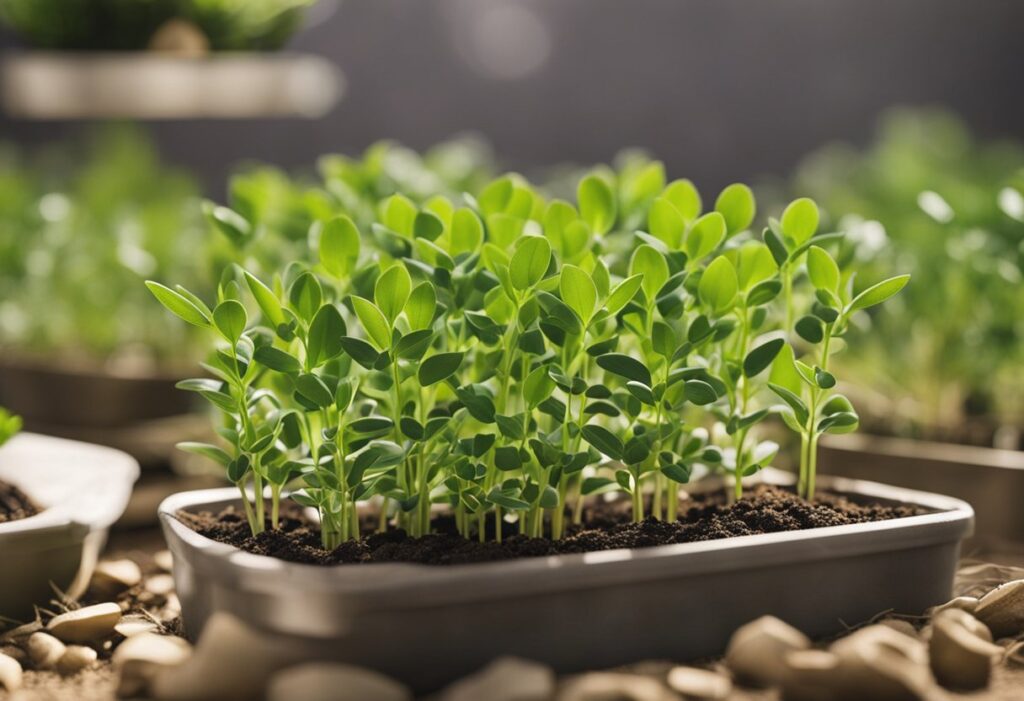
Propagating Blue False Indigo (Baptisia australis) requires patience but is rewarding for its long-lived, vibrant blooms. Your main methods include seed sowing, cuttings, and division.
Seed Sowing
To propagate by seeds, follow these steps:
- Stratify the seeds by chilling them for 10-12 weeks to break dormancy.
- Sow: Plant seeds in moist soil in a container and place it in a cold frame during spring.
- Germination: Expect germination in 7 to 14 days at 75°F (24°C). Thin seedlings as needed.
Cuttings
For cuttings, employ this technique in late summer:
- Harvest: Take semi-hardwood cuttings from the plant.
- Preparation: Dip the base of each cutting in rooting hormone.
- Plant: Insert the cutting into a mixture of peat and perlite, ensuring consistent moisture and warmth.
Division
Divide your plant in the fall, late winter, or early spring:
- Select: Identify a healthy clump to be divided.
- Cut: Use a sharp knife to divide the clump into smaller sections.
- Replant: Position the new divisions in a well-prepared bed, with ideal spacing for growth.
Landscape Use and Design
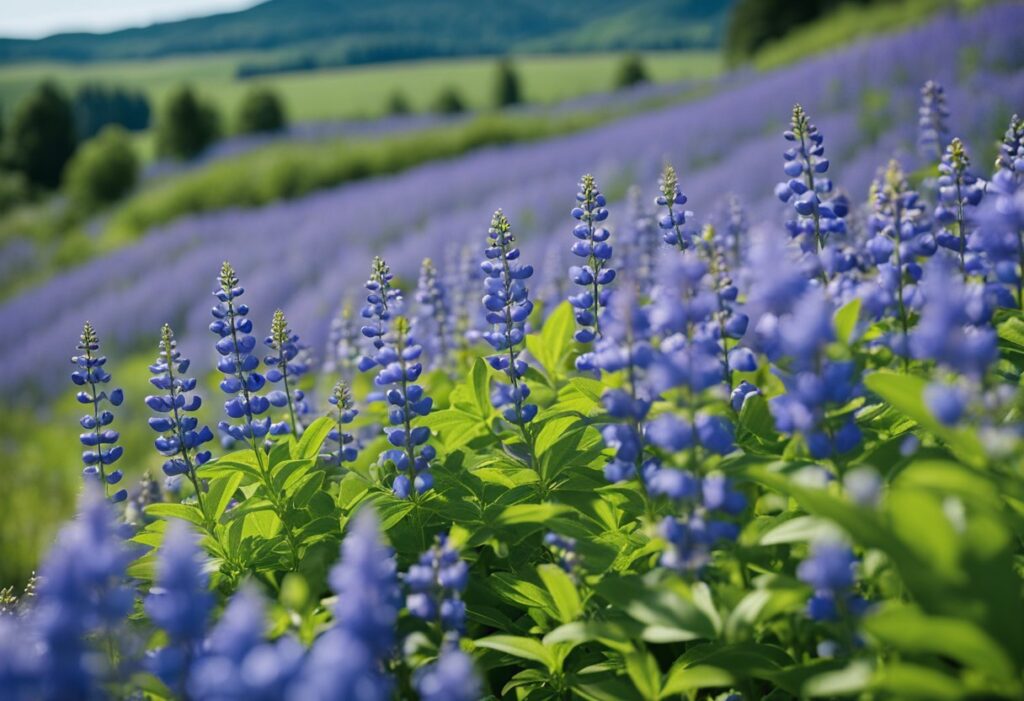
Baptisia australis, commonly known as Blue False Indigo, is a hardy perennial you can incorporate into your garden for a touch of vibrant blue and effortless charm. Its deep indigo-blue flowers contrast sharply against the foliage, making it a focal point from late spring to early summer.
When planning your landscape, consider the following:
- Height and Spread: Expect Blue False Indigo to reach about 3 to 4 feet in height and width. Ensure you allow enough space for its bushy growth habit.
- Site Selection: Choose a spot with full sun to partial shade exposure.
- Soil Requirements: Plant in well-drained soil to prevent root rot.
Here’s how to integrate Blue False Indigo in your garden design:
- Mass Planting: Create a compelling display by planting multiple specimens together. This approach can give your garden a robust, full look and is perfect for borders.
- Pollinator Attraction: Baptisia is excellent for attracting pollinators like bees and butterflies, helping to support local ecosystems.
- Companion Planting: Pair with other perennials such as cone flowers or black-eyed Susans for a prairie-style garden. Here are some companion plants:
- Echinacea (Coneflower)
- Rudbeckia (Black-Eyed Susan)
- Salvia (Sage)
- Low Maintenance: Once established, Baptisia is drought-tolerant and requires minimal watering. It’s an ideal choice if you’re looking for long-term, low-maintenance additions to your landscape.
Pests and Diseases
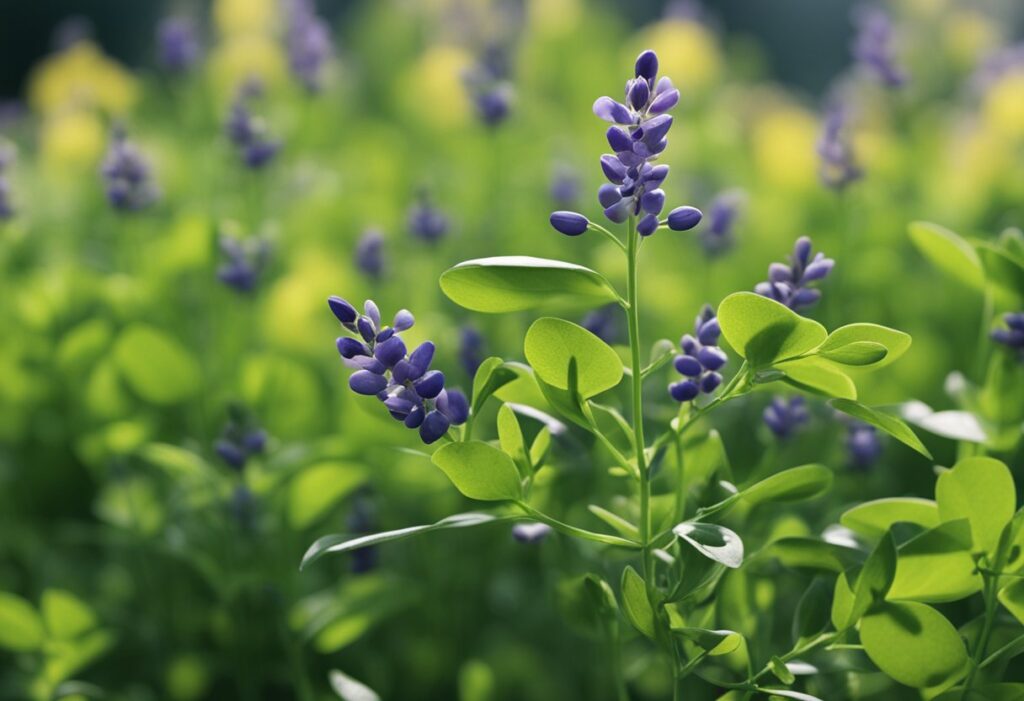
Baptisia Australis, or Blue False Indigo, encounters few serious pest or disease issues, making it a robust addition to your garden. However, vigilance against common pests and swift disease management can keep your plants healthy.
Common Pests
Blue False Indigo may occasionally be troubled by aphids and certain beetle species.
- Aphids: These small, sap-sucking insects can cause the foliage to become distorted. You can often manage them by:
- Spraying with water to dislodge the pests.
- Using insecticidal soap if infestation persists.
- Beetles: Beetles can chew on leaves, creating holes.
Disease Management
Diseases are rarely a problem with Blue False Indigo, but it can be susceptible to:
- Root rot: This can occur if planted in soil that does not drain well. Ensure you:
- Plant in well-draining soil.
- Avoid overwatering.
- Fungal diseases: These may affect the plant in humid conditions. You can prevent and manage fungal issues by:
- Providing good air circulation around the plants.
- Watering at the base to keep foliage dry.
- Using fungicides as a last resort if natural methods fail.
Frequently Asked Questions
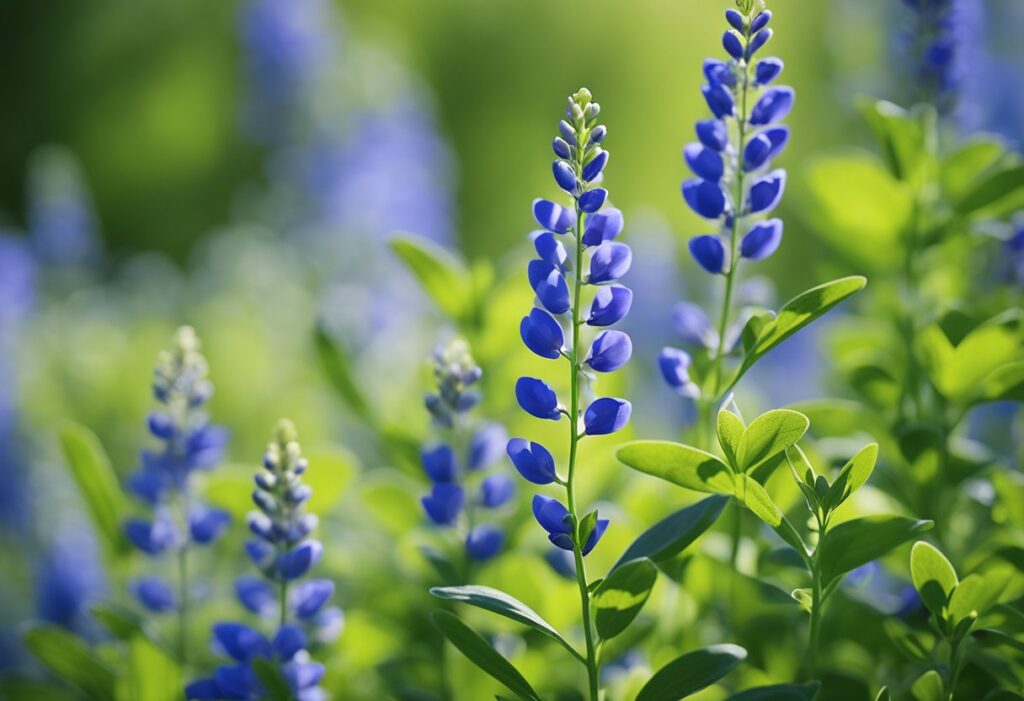
In this section, you’ll find concise answers to common queries about Blue False Indigo, ranging from care tips to blooming specifics.
How do you properly care for a Blue False Indigo plant?
To care for Blue False Indigo, plant it in well-draining soil in full sun to part shade. It thrives without frequent watering, fertilizing, or pruning, making it a low-maintenance option for your garden.
What is the ideal location to plant Blue False Indigo?
Plant Blue False Indigo in a location that receives full to partial sunlight. This adaptable plant prefers a spot with well-drained soil. It tolerates various conditions, but poor drainage can lead to root issues.
How can I propagate Blue False Indigo effectively?
You can propagate Blue False Indigo by taking cuttings in early spring. Cut a six-inch long stalk at an angle, apply rooting hormone, and place it in a mix of sand and compost under a plastic cover to maintain moisture.
Is Blue False Indigo considered an invasive species?
No, Blue False Indigo is not considered an invasive species. It is a native North American plant that grows well in its natural habitat without displacing other native flora.
At what rate does Blue False Indigo spread?
Blue False Indigo spreads slowly, forming mounds that can be 3 to 4 feet wide. It gradually grows through the expansion of its root system but does not aggressively overrun garden spaces.
How long is the blooming period for Blue False Indigo?
The blooming period for Blue False Indigo typically spans late spring to early summer. This perennial can feature vibrant blue flowers for three to six weeks.

